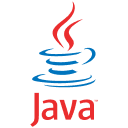Our placement and success stories showcase the achievements of our students and the opportunities that are available
R Programming Certificate Course
- Online and Offline Classes
- Certificate of Completion
- 100% Placement assistance
- Industry focused curriculum
- Timely assignments
- Mock interviews
Learn how to manipulate data, create visualizations, and make data-driven decisions with our comprehensive R programming course
"Master Data Analytics with R Programming: Unlock the Power of Statistical Computing"
R programming language is rather an environment for statistical computing and data science. Having its application on a global scale, R programming language will open a world of opportunities to you. We introduce you to programming fundamental for R, data structures to use, and working with data in R using different data formats. You will also be working with data visualization techniques.

Problem solving skills

Design fundamentals

Career advancement

Industry best practices
Career Opportunities
Discover and unleash the potential of your future by exploring the plethora of exciting career opportunities available to you
Research Analyst
Data Visualization Specialist
Quantitative Analyst
Statistical Analyst
Business Intelligence Analyst
Discover the Fundamentals of Development with Our Comprehensive Course!
In-depth training with hands-on application
One-on-one mentorship with industry experts
Real-world projects for practical learning
Theory classes are followed by practical sessions conducted in labs
Curriculum
-
R Basics

- Math, variables and strings
- Vector operations
- Introduction R nuts and bolts

-
Data Structures in R

- Arrays and Matrices
- Lists
- Dataframes

Features of the course

4 months curriculum
Get a robust 4-month curriculum that covers all the essentials of the course

Unlimited Mentoring
Get mentoring from industry experts to guide you every step of the way

Build Your Portfolio
Build an impressive portfolio of real-world projects to showcase your skills and stand out from the competition

Placement Support
Get dedicated placement support to help you land a job and kickstart your career
A student’s journey
Shape Your Career with Our Comprehensive Journey
Select Project
Choose your project topic and start the project with our project-based learning approach

Complete UI and Create Database
Complete the frontend of your project and prepare its database

Complete Backend
Create API’s required for your project

Get your Project reveiwed
After completing the project, get it approved by your mentor

Upload to Github
Upload your created project on Github

1st project Completed
After uploading, present your project to your mentors and your 1st project will be completed!

Student Work
Our student work showcases the real-world application of the skills and techniques you will learn in our course. Get inspired and see what you can achieve with our program
Our recent placements
We are proud to have trained professionals who have gone to work at some of the biggest names in the industry
Course Completion Certificate
Award Yourself for Your Hard Work
Proudly display your certificate and show the world what you have accomplished with our program.

Eligibility
If you meet the below criteria, you are eligible to join our comprehensive R Programming course and start your journey to success!"
- IT PROFESSIONALS If you are a professional and looking to enhance your profile then this course is the right choice as a first step in upscaling your profile.
- ENTRY LEVEL DEVELOPERS Fresh graduates who are looking to make an entry in IT world this course would be good start to make yourself stand apart from the crowd ,get your fundamentals strong.
Where to begin your journey?
1
Attend our free webinar
Get an introduction to the world of R Programming and learn how it can benefit your career. Our expert instructors will guide you through the basics.
Register2
Live session with mentor
Take your learning to the next level with a one-on-one session with a professional R Programming Specialist.
Book session3
Enroll for the course
Sign up now and get ready to embark on your R programming journey with confidence and support!"
EnrollNew Batch Alert
Are you ready to start your R programming journey? Our next batch of the comprehensive R programming course is starting soon. Join a community of like-minded individuals and learn from industry experts.

22 April
4:30 pm to 6 pm
*Limited seats
Want to know other batch availability?
FAQ
R Programming Basics
1. What is R programming used for?
2. How do I install packages in R?
3. What is the difference between a data frame and a matrix in R?
4. How do I load data from a CSV file into R?
5. How do I handle missing values in R?
6. What are factors in R and how do I work with them?
7. How do I perform basic statistical calculations in R?
8. What is the difference between the base plot system and ggplot2 in R?
9. How do I write a loop in R to repeat a set of instructions?
10. What are the best practices for organizing and documenting R code?
Use descriptive file and function names:This will make it easier for you and others to find the code you need.
Use comments to explain your code: It is important for complex code or code that you may not come back to for a while.
Break your code into smaller chunks:This will make it easier to read and debug.
Use a consistent coding style: It will make your code more readable and easier to maintain.
Document your code with Roxygen: Roxygen is a system for documenting R code that is similar to Javadoc.
Use a version control system: This will allow you to track changes to your code and revert to previous versions if necessary.

































Learning a lot within a course period while working on individual project. Placement assistance is also very much appreciated. I would like to highly recommended to everyone. Specially thanks to my mentor Tanmay sir. He is very supportive and always motivate to every student. The teaching staff has a good experience in the field of UI/UX design. Good Institute to start your UI/UX journey. I also appreciate to recruitment team who always share the openings.